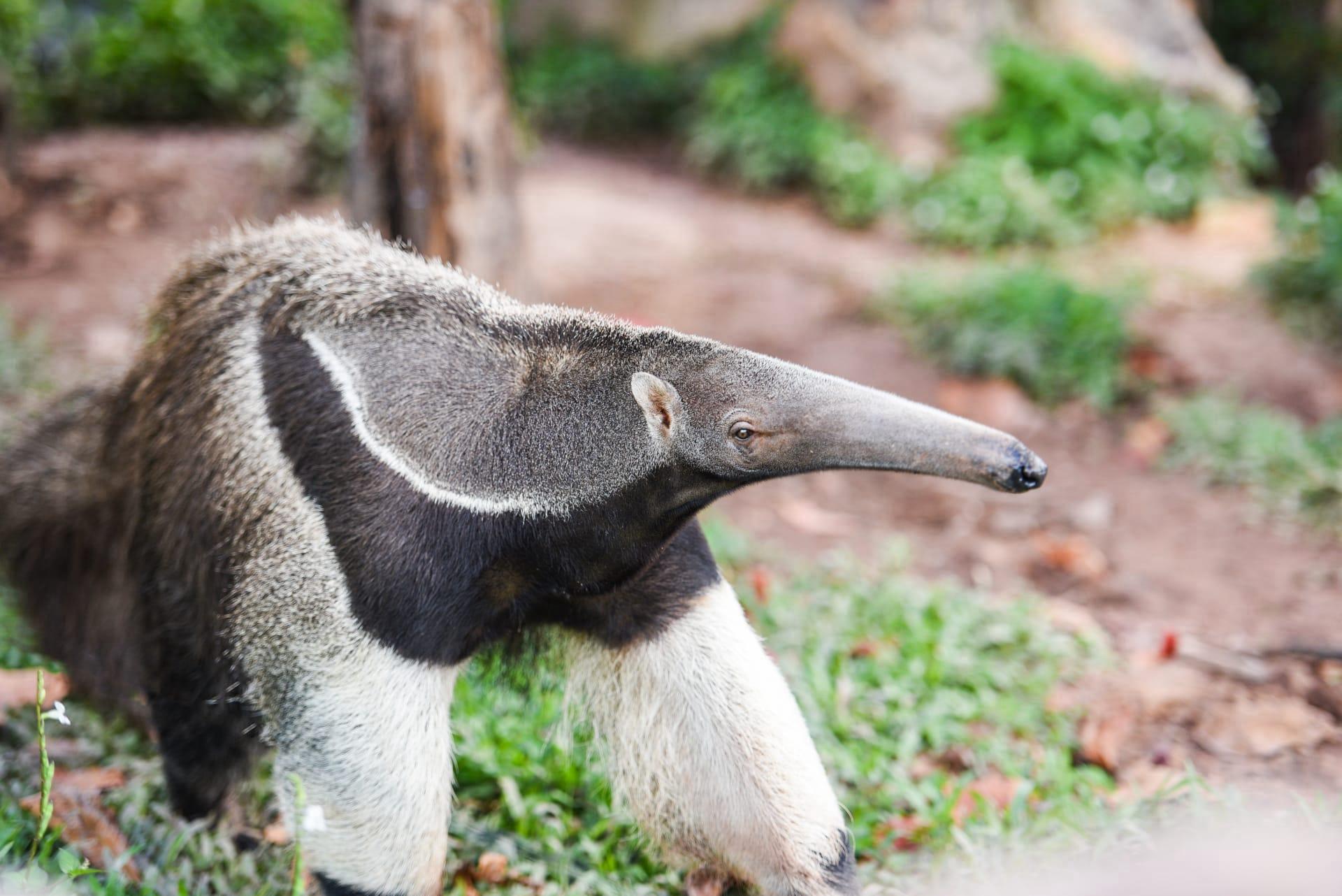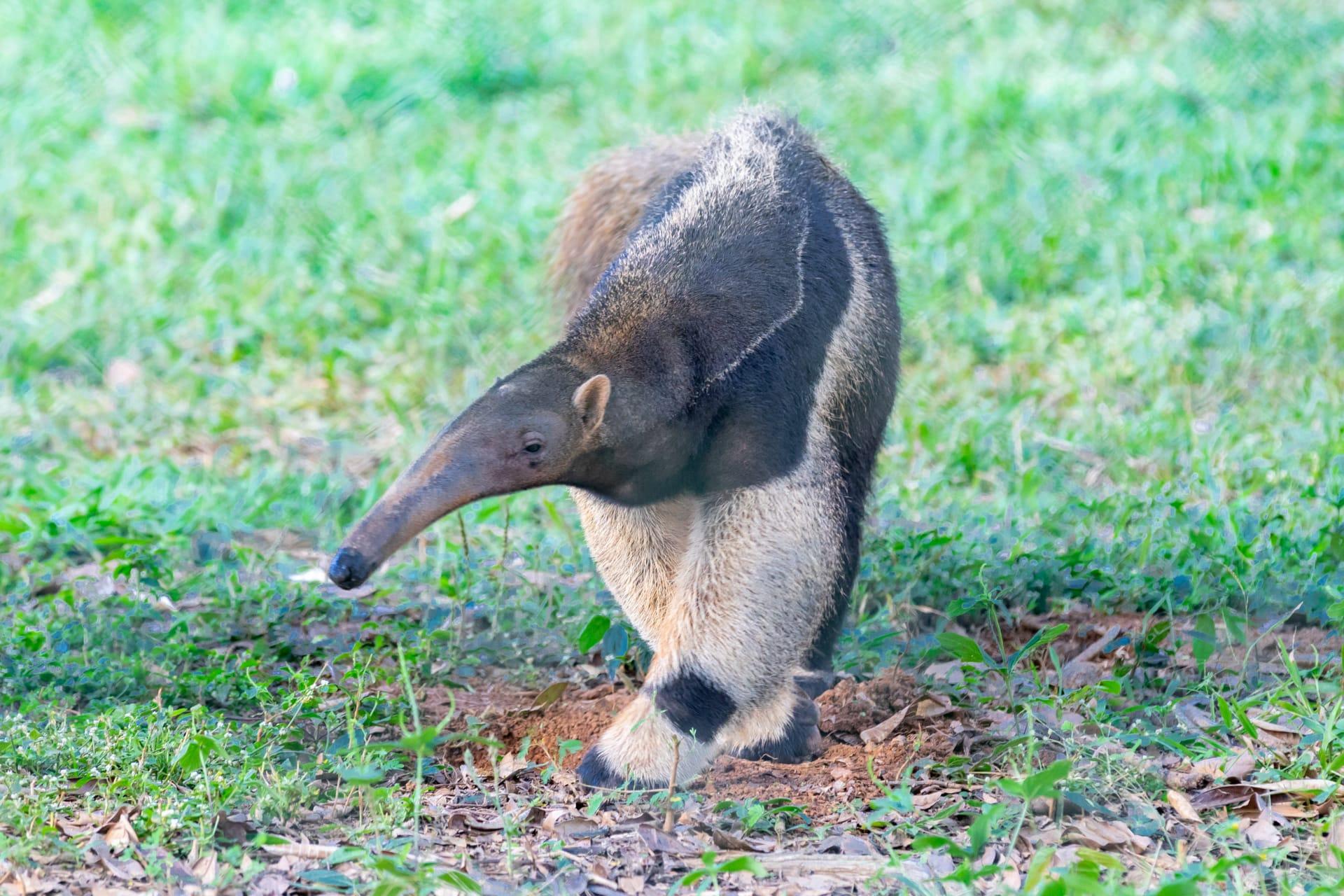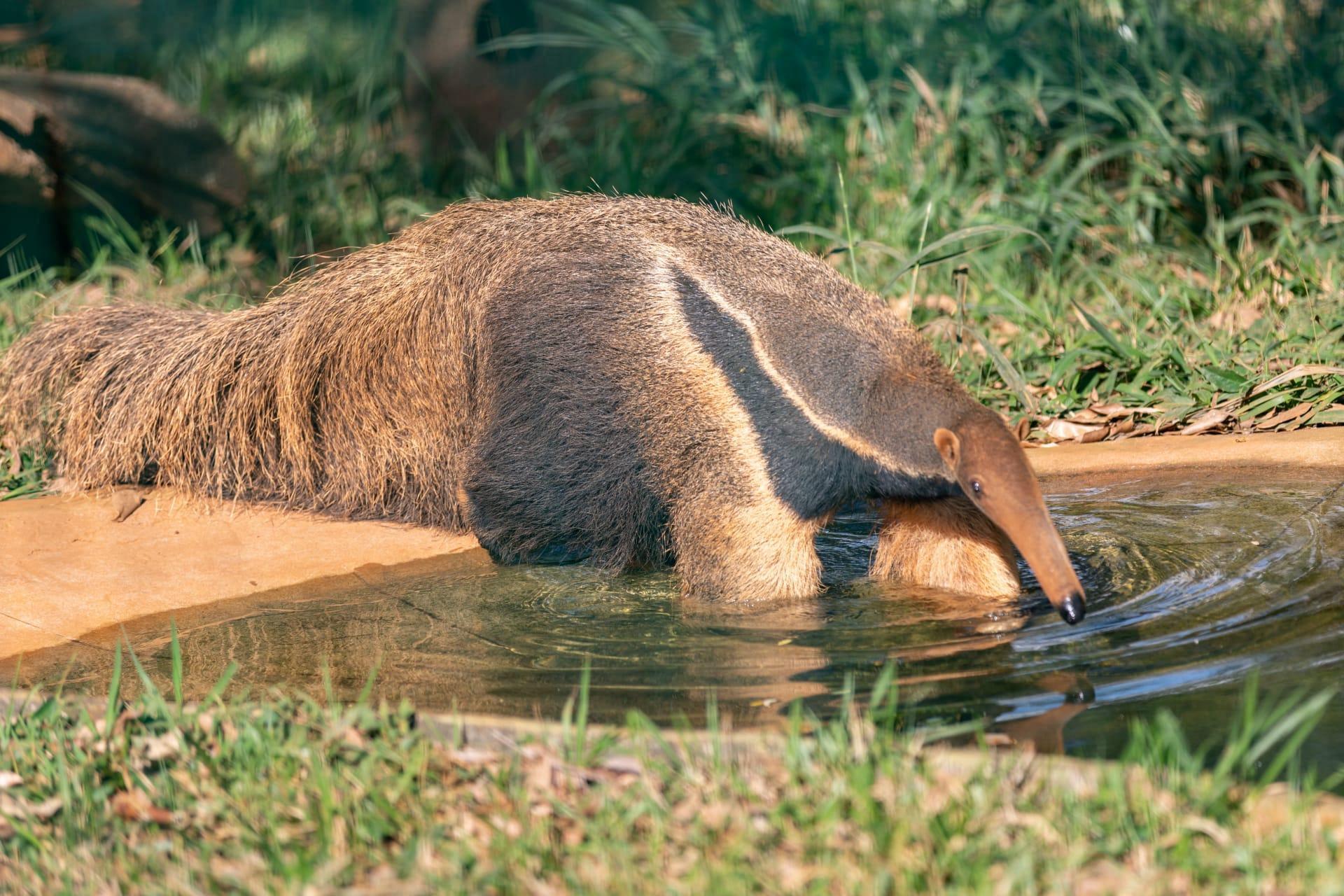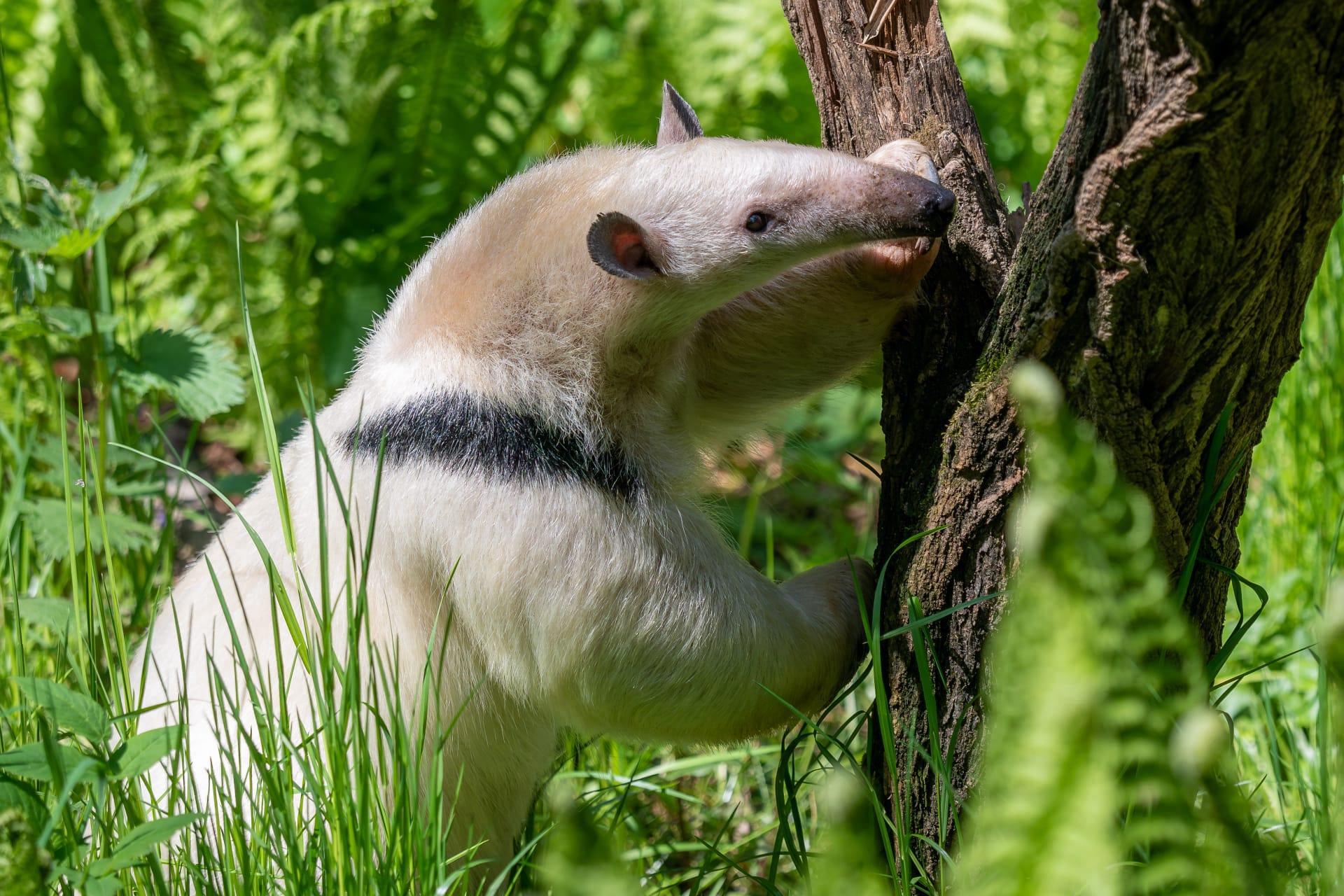Anteater Characteristics
- Home /
- Mini Encyclopedia /
- Animal /
- Anteater Characteristics
1
Anteaters, intriguing creatures of the animal kingdom, boast a unique physiology. These mammals vary in size depending on their species. The giant anteater, for instance, can grow up to 7 feet long (including the tail) and weigh around 100 pounds. Their lifespan in the wild averages 14 years, but under human care, they can live up to 26 years. Their robust, bushy tails, as long as their bodies, help them balance and keep warm.
The most distinctive organ of an anteater is its elongated snout, housing a tongue that can extend up to 2 feet. This specialized tongue is covered in sticky saliva and tiny, backward-pointing spines. It's designed for rapid movement, flicking in and out up to 160 times per minute, allowing anteaters to consume thousands of ants and termites daily without destroying their nests.

2
Question: Why don't anteaters digest ants and termites immediately upon consumption?
Answer: Anteaters have a unique digestive system adapted to their insectivorous diet. Their stomachs, using strong, grinding motions similar to a bird's gizzard, and minimal stomach acid, break down the hard exoskeletons of ants and termites. This process is slow, ensuring maximum nutrient extraction and minimizing harm from insect bites and stings inside the body.

3
Anteaters exhibit distinct locomotion characteristics. They walk on their knuckles, keeping their sharp claws retracted for digging into ant hills. This knuckle-walking is similar to that of great apes. Their claws also aid in defense, capable of fending off predators like jaguars and pumas.
In terms of hunting, anteaters rely on their exceptional sense of smell, 40 times more potent than that of humans. They locate insect colonies and swiftly dig them out. Their long tongues, with rapid-fire motion, allow them to consume up to 30,000 insects in a single day, spending only a few minutes at each anthill to avoid ant attacks.

4
Anteaters inhabit diverse environments, from rainforests and grasslands to savannas. These habitats provide ample food sources and shelter. They adapt well to varying conditions, thriving in both wet and arid areas, but always near abundant food supplies.
Reproduction in anteaters is solitary, except during mating. Females give birth to a single offspring after a gestation period of about 6 months. The young anteaters cling to their mother's back for up to a year, learning survival skills. This close bond ensures the young are well-protected and educated in foraging techniques.

5
Book: "The Secret World of Anteaters" by Maria Gomez, published in 2010, USA. This book delves into the hidden lives of anteaters, exploring their habits, physiology, and the challenges they face in the wild. Gomez, a wildlife biologist, combines scientific research with captivating narratives to bring these creatures to life for her readers.
Book: "Anteaters: Giants of the Insect World" by Dr. Liam Clarke, published in 2015, United Kingdom. Clarke offers an in-depth look at the evolutionary journey of anteaters, their environmental impact, and conservation efforts. The book is a blend of scientific facts and engaging storytelling, aiming to raise awareness about these unique mammals.